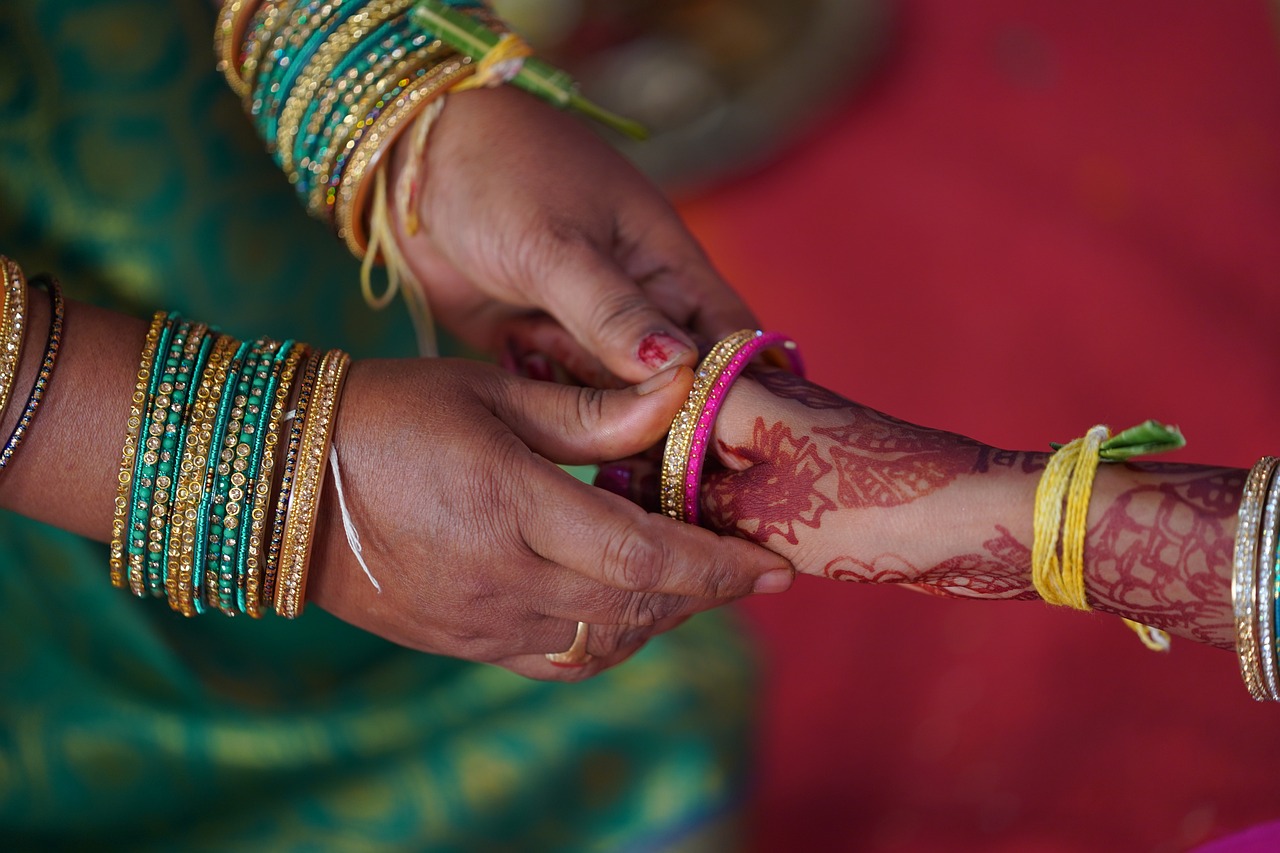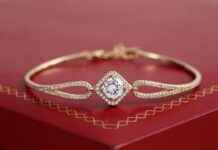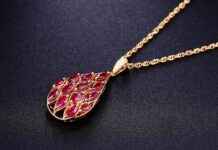This article delves into the importance of jewelry across diverse cultures, examining its historical, social, and personal meanings. Jewelry is more than just an adornment; it serves as a powerful medium for expressing identity and tradition.
Historical Significance of Jewelry
Jewelry has been an integral part of human civilization for millennia. Its origins can be traced back to ancient civilizations where it symbolized wealth, power, and status. Over the years, jewelry has evolved, reflecting the changes in societal norms and values. For instance, in ancient Egypt, jewelry was not only used for decoration but also held spiritual significance, often seen as a means to connect with the divine.
Jewelry as a Cultural Identity
In various cultures, jewelry acts as a marker of identity, representing ethnic backgrounds and cultural heritage. Many communities utilize jewelry to express their uniqueness. For example, the intricate designs of Indian jewelry often tell stories of tradition and family lineage, while Maori jewelry in New Zealand symbolizes tribal affiliation and personal identity.
Traditional Jewelry in Indigenous Cultures
- Beaded Jewelry in African Cultures: Beaded jewelry is deeply rooted in African traditions, often used in rituals and celebrations. Each bead color and pattern carries specific meanings, contributing to social identity and community bonding.
- Silver Jewelry in Native American Tribes: Silver jewelry is renowned in Native American craftsmanship, often imbued with spiritual significance. It reflects the tribe’s history, beliefs, and connection to nature.
Jewelry in Religious Practices
Jewelry often plays a crucial role in various religious ceremonies. In many faiths, specific pieces are worn during significant life events, symbolizing devotion and belief. For instance, wedding rings in Christianity represent eternal love, while Hindu bridal jewelry is rich with cultural symbolism.
Modern Interpretations of Jewelry
Contemporary jewelry design mirrors evolving societal values and aesthetics. Modern trends often reinterpret traditional designs, blending them with contemporary styles. The rise of fashion jewelry reflects consumer preferences for unique and expressive pieces.
Ethical Jewelry and Sustainability
As awareness of sustainability grows, the demand for ethical jewelry has surged. Consumers are increasingly seeking responsibly sourced materials, prompting a shift towards fair trade practices within the industry.
Jewelry as a Form of Expression
Jewelry serves as a powerful form of personal expression. Many individuals choose custom or personalized pieces to tell their unique stories. This trend highlights the importance of individuality in today’s society.
The Impact of Social Media on Jewelry Choices
Social media platforms have transformed how people discover and select jewelry. Influencers on platforms like Instagram and TikTok play a significant role in shaping trends and consumer preferences.
The Future of Jewelry in Global Cultures
As globalization continues to influence cultural exchanges, the future of jewelry is likely to blend traditional and modern elements. This evolution will create new trends, enriching the global jewelry landscape.
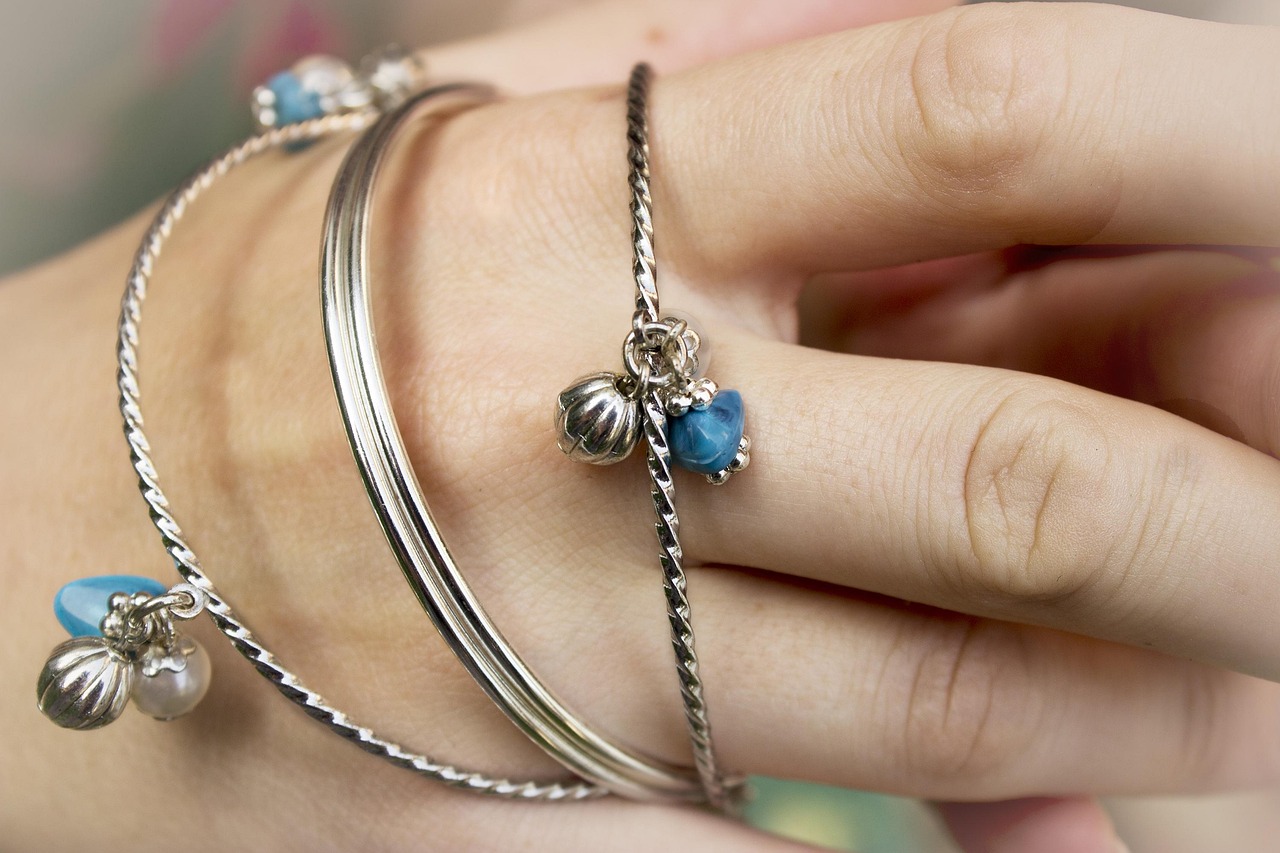
Historical Significance of Jewelry
Jewelry has played an integral role in human civilization for millennia, serving as a powerful symbol of wealth, power, and status. Its origins can be traced back to ancient civilizations where it was crafted from materials readily available in the environment, such as shells, stones, and metals. Over time, the evolution of jewelry has mirrored the socio-economic and cultural changes of societies.
In ancient Egypt, for instance, jewelry was not only a sign of wealth but also held spiritual significance. The Egyptians adorned themselves with gold and precious stones, believing that these items would protect them in the afterlife. Similarly, in ancient Rome, jewelry became a status symbol among the elite, with intricate designs that showcased the wearer’s wealth and social standing.
As we move through history, the Middle Ages saw jewelry become more than just decorative pieces; it transformed into a means of political alliance and social ranking. Nobles exchanged jewelry as gifts to solidify relationships and assert their power. The Renaissance period further revolutionized jewelry design, emphasizing artistry and craftsmanship, which led to the creation of exquisite pieces that were both functional and ornamental.
In many cultures, jewelry has also served as a form of currency and a means of trade. For example, in various indigenous cultures, jewelry made from natural materials was often used in barter systems. This practice highlights the multifaceted role jewelry has played not just as adornment but as a vital component of economic systems.
Today, the significance of jewelry continues to evolve. While it still symbolizes wealth and status, it also reflects personal identity and cultural heritage. Modern jewelry often incorporates elements that resonate with individual stories, making it a unique expression of personal history.
In conclusion, the historical significance of jewelry extends far beyond mere decoration. It encapsulates the essence of human civilization, reflecting our values, beliefs, and social structures throughout time.
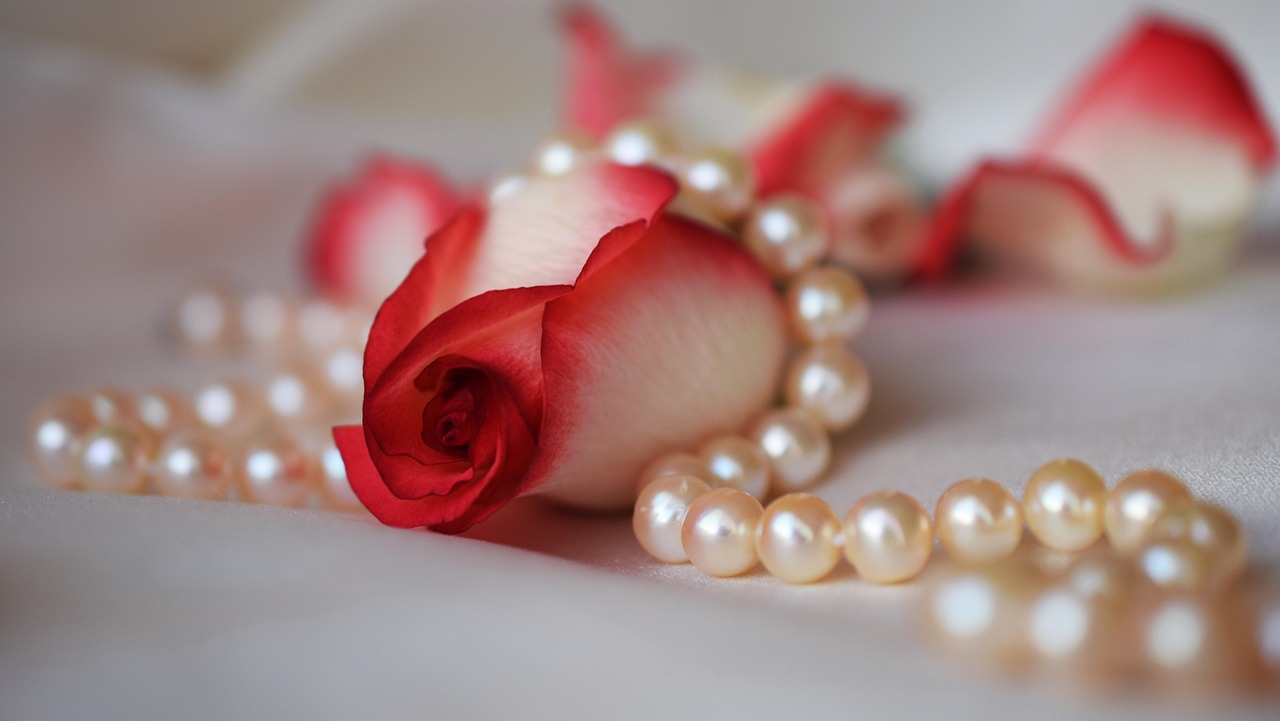
Jewelry as a Cultural Identity
Throughout history, jewelry has transcended mere adornment to become a profound symbol of cultural identity. In various communities around the world, jewelry serves as a vital expression of ethnic backgrounds and cultural heritage. This section delves into how different societies utilize jewelry to showcase their uniqueness and maintain their traditions.
In many cultures, jewelry is not just a fashion statement; it embodies the values, beliefs, and stories of the people who wear it. For instance, in South Asian cultures, intricate gold jewelry is often worn during weddings and festive occasions, symbolizing prosperity and familial connections. These pieces are often passed down through generations, carrying with them the history and legacy of the family.
Similarly, in Indigenous cultures, jewelry often incorporates materials and designs that are significant to their heritage. For example, Native American tribes are known for their use of turquoise and silver, which are not only aesthetically pleasing but also hold spiritual meanings. Each piece tells a story, reflecting the tribal identity and the natural world that surrounds them.
- African Beaded Jewelry: In many African cultures, beaded jewelry plays a crucial role in social identity. Each color and pattern can signify different meanings, such as marital status or tribal affiliation.
- Maori Taonga: In New Zealand, the Maori people create taonga (treasures) that are often worn as pendants. These pieces are deeply rooted in their cultural identity and represent their ancestors.
Furthermore, jewelry can also serve as a tool for political expression. In recent years, many artists and designers have begun to create pieces that challenge societal norms and advocate for change, using their work to promote awareness of cultural issues.
In conclusion, jewelry is a powerful medium through which individuals and communities can express their cultural identity. By wearing these adornments, people not only celebrate their heritage but also educate others about their unique backgrounds, fostering a greater appreciation for the diversity of human experience.
Traditional Jewelry in Indigenous Cultures
Traditional jewelry holds a profound significance in the cultures of indigenous peoples across the globe. These unique adornments are not merely decorative items; they embody the traditions, beliefs, and identities of the communities that create them. This section delves into specific examples of traditional jewelry and their meanings, showcasing how these pieces serve as a bridge between the past and present.
- African Beaded Necklaces: In many African cultures, beaded jewelry is a vital aspect of identity. Each color and pattern in the beads can signify different tribal affiliations, social status, or even personal achievements. For instance, the Maasai people of Kenya and Tanzania use intricate beadwork to tell stories of their history and cultural values.
- Native American Silver Jewelry: Among Native American tribes, particularly the Navajo and Zuni, silver jewelry is not only a form of artistic expression but also carries spiritual significance. Often adorned with turquoise, these pieces are believed to offer protection and healing, reflecting the deep connection between the people and their land.
- Maori Taonga: In New Zealand, the Maori people create taonga (treasures) that often take the form of intricate jewelry, such as pendants and earrings. These pieces are traditionally made from materials like bone and jade, symbolizing ancestry and heritage. Each taonga tells a story, representing the wearer’s lineage and cultural pride.
- Andean Silver and Textiles: The indigenous peoples of the Andes, particularly in Peru and Bolivia, craft stunning jewelry from silver and local materials. These pieces often incorporate traditional motifs that reflect the natural world and the spiritual beliefs of the Andean cultures, serving as a testament to their rich heritage.
In conclusion, traditional jewelry in indigenous cultures is a vibrant expression of identity and heritage. Each piece is steeped in meaning, serving not only as an accessory but also as a vital link to cultural history and community values. Understanding these adornments allows us to appreciate the rich tapestry of human expression found in jewelry across the world.
Beaded Jewelry in African Cultures
Beaded jewelry holds a profound place in the cultural tapestry of Africa, serving not only as an adornment but also as a vital expression of identity and community. This intricate form of art is often crafted from various materials such as glass, wood, and metal, each carrying its own significance and story.
In many African societies, beaded jewelry is integral to rituals and celebrations. For instance, during rites of passage, such as weddings or coming-of-age ceremonies, specific bead patterns and colors are chosen to symbolize different meanings. These pieces are not merely decorative; they are imbued with cultural narratives that connect individuals to their heritage.
Moreover, beaded jewelry serves as a marker of social identity. Different tribes and communities use distinct styles and colors to signify their unique identities. For example, the Maasai of Kenya and Tanzania are renowned for their vibrant beadwork, which reflects their cultural values and social status. The colors and patterns used in their jewelry can indicate age, marital status, and even clan affiliation.
Additionally, the act of creating and wearing beaded jewelry fosters community bonding. Crafting these pieces often involves collective efforts, where artisans share techniques and stories, thereby strengthening social ties. This communal aspect of beadwork enhances the sense of belonging and pride within the community.
In conclusion, beaded jewelry in African cultures transcends mere aesthetics; it embodies deep cultural significance and plays a critical role in social identity and community cohesion. As these traditions continue to evolve, they remain a vital link to the past while also adapting to contemporary expressions of identity.
Silver Jewelry in Native American Tribes
Silver jewelry holds a profound place in the traditions and artistic expressions of Native American tribes. This exquisite form of craftsmanship not only showcases the skill and creativity of artisans but also embodies deep spiritual significance and cultural heritage. Historically, silver was introduced to Native American tribes through trade, particularly after the arrival of the Spanish in the 16th century. The adaptation of silver into their jewelry-making practices marked a pivotal moment in their artistic evolution.
One of the most notable aspects of Native American silver jewelry is its use of symbolic designs and motifs, often reflecting the tribe’s beliefs, stories, and natural surroundings. For instance, the use of turquoise, a stone revered for its protective qualities, is commonly integrated into silver pieces. The combination of silver and turquoise not only enhances the aesthetic appeal but also carries a spiritual resonance for the wearer.
Crafting silver jewelry is a meticulous process that often involves techniques passed down through generations. Artisans employ methods such as soldering, casting, and inlaying to create intricate designs. Each piece of jewelry tells a story, serving as a connection to the past and a representation of cultural identity. For many Native American artisans, the creation of silver jewelry is not just a trade; it is a way to keep their heritage alive and share their narratives with the world.
Furthermore, silver jewelry plays a significant role in various ceremonies and rituals within Native American communities. It is often worn during important events, symbolizing status, identity, and connection to one’s lineage. As such, these pieces are cherished not only for their beauty but also for their cultural importance.
In conclusion, silver jewelry in Native American tribes is a remarkable testament to the intersection of art, spirituality, and cultural identity. Its historical context enriches our understanding of Native American craftsmanship, reminding us of the stories and traditions that continue to thrive through these beautiful creations.
Jewelry in Religious Practices
holds a significant place across various faiths, symbolizing devotion, identity, and cultural heritage. This section delves into how different religions incorporate jewelry into their rituals and ceremonies, reflecting their beliefs and traditions.
In many cultures, jewelry is not merely an accessory but a spiritual emblem. For instance, in Hinduism, gold jewelry is often associated with prosperity and divine blessings. Brides typically wear intricate gold ornaments during weddings, symbolizing their connection to the divine and their family’s status. Additionally, mangalsutra, a sacred necklace, represents the marital bond and is worn by married women as a sign of their commitment.
Similarly, in Christianity, jewelry plays a role in various religious ceremonies. Crosses and crucifixes are commonly worn as a symbol of faith. During significant events such as baptisms and confirmations, it is customary to gift religious jewelry, reinforcing the individual’s connection to their faith and community.
In Islam, jewelry is often given as a form of dowry and is integral to wedding traditions. Gold and silver adornments are not only prized possessions but also serve as a means of securing financial stability for women. Furthermore, wearing jewelry with religious inscriptions, such as verses from the Quran, is a way for Muslims to express their faith publicly.
Indigenous religions also utilize jewelry in their rituals. For example, Native American tribes craft jewelry using natural materials, often embedding spiritual meanings within their designs. Each piece tells a story, reflecting the tribe’s history and beliefs.
In conclusion, jewelry serves as a profound expression of faith and identity across various religions. Its significance extends beyond mere decoration, becoming a vital component of cultural and spiritual practices that connect individuals to their beliefs and communities.
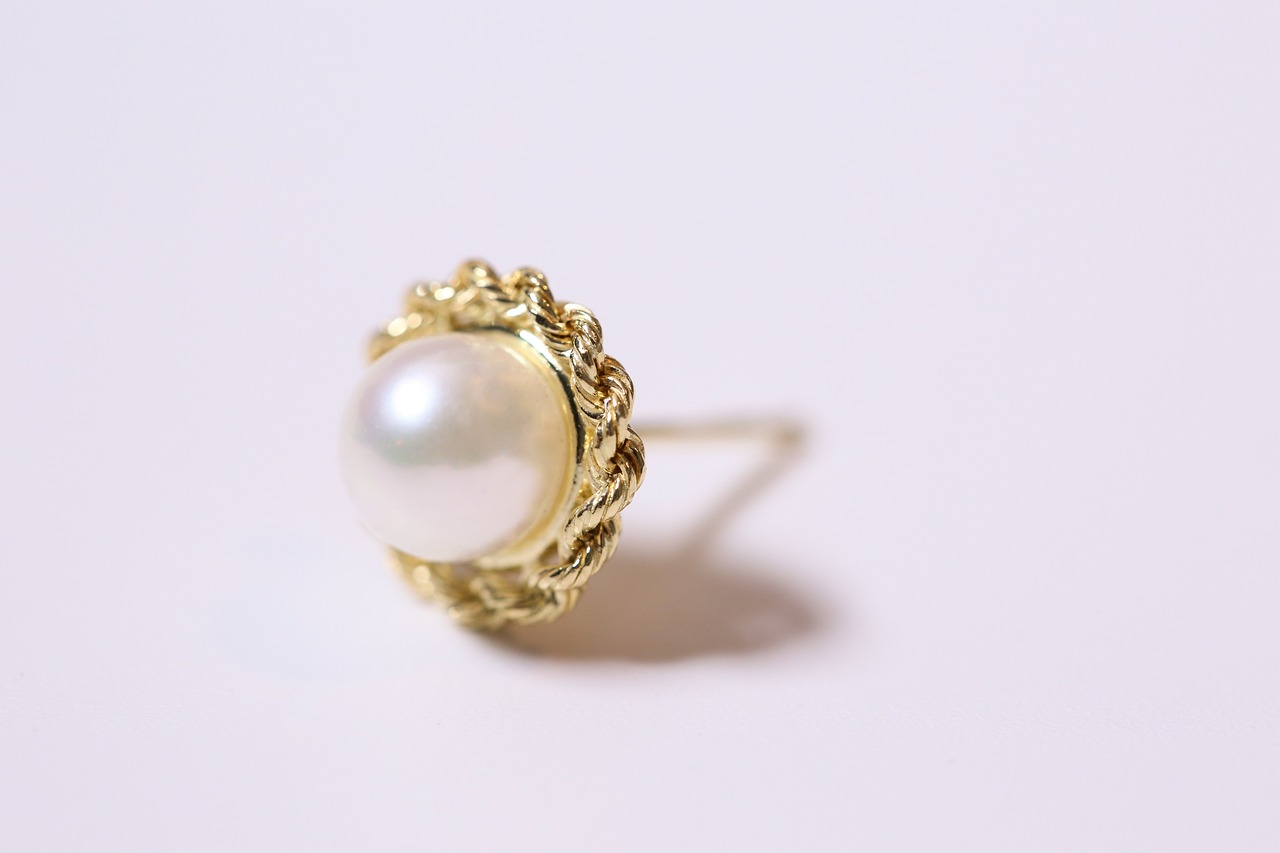
Modern Interpretations of Jewelry
have evolved significantly in response to the shifting landscapes of societal values and aesthetic preferences. In the contemporary world, jewelry is not merely an accessory; it embodies personal narratives and cultural dialogues.
As we delve into modern jewelry design, we observe a fascinating interplay between traditional craftsmanship and innovative techniques. Designers today are increasingly inspired by historical motifs yet reinterpret them through a modern lens, creating pieces that resonate with both heritage and contemporary style.
- Reimagining Traditional Designs: Many contemporary jewelers draw from the rich tapestry of traditional styles, infusing them with modern materials and techniques. For instance, the intricate beadwork of Indigenous cultures is now being paired with sustainable materials, appealing to a new generation of eco-conscious consumers.
- Symbolism and Meaning: The meanings behind jewelry have also transformed. Where once a piece might symbolize wealth or status, today’s designs often convey messages of empowerment, individuality, and social responsibility.
- Inclusivity in Design: Modern jewelry design embraces inclusivity, showcasing diverse cultural influences and promoting representation. This shift allows for a broader spectrum of voices and stories to be expressed through adornments.
Furthermore, the rise of digital technology has revolutionized the way jewelry is created and marketed. 3D printing and CAD software enable designers to experiment with forms that were previously unimaginable, leading to unique and innovative pieces that challenge traditional norms.
In conclusion, the modern interpretation of jewelry serves as a mirror reflecting our evolving values and aesthetics. As we continue to navigate these changes, it is evident that jewelry will remain a vital form of self-expression, bridging the past with the future.
Fashion Jewelry Trends
In recent years, the fashion jewelry industry has experienced remarkable growth, largely influenced by the power of celebrity endorsements and the pervasive reach of social media. This transformation has led to a dynamic landscape where trends evolve rapidly, reflecting broader cultural shifts and consumer preferences.
One of the most significant trends is the rise of statement pieces. These bold, eye-catching accessories are designed to stand out and make a personal statement. Influencers and celebrities often showcase these items on platforms like Instagram and TikTok, creating a ripple effect that drives demand among their followers. As a result, consumers are increasingly seeking unique, standout jewelry that allows them to express their individuality.
- Layering: The trend of layering necklaces, bracelets, and rings has gained immense popularity. This style allows wearers to mix and match different pieces, creating a personalized look that reflects their personal style.
- Eco-Friendly Materials: With growing awareness of environmental issues, many brands are shifting towards sustainable practices. Jewelry made from recycled materials or ethically sourced gemstones is becoming increasingly sought after.
- Minimalism: On the other end of the spectrum, minimalist designs are also trending. Simple, elegant pieces that can be worn every day are favored by those who appreciate understated elegance.
The cultural implications of these trends are profound. Fashion jewelry serves as a reflection of societal values, with consumers increasingly prioritizing sustainability and ethical considerations in their purchasing decisions. This shift not only influences what consumers buy but also how brands market their products.
In conclusion, the landscape of fashion jewelry is continually evolving, driven by the interplay between celebrity influence, social media, and changing consumer values. As trends emerge and fade, the industry remains a vibrant expression of personal and cultural identity.
Ethical Jewelry and Sustainability
Ethical jewelry has emerged as a significant trend in the jewelry industry, reflecting a growing awareness and concern about sustainability and fair trade. As consumers become more informed about the environmental and social impacts of their purchases, many are shifting towards responsible choices when it comes to adornments.
One of the primary drivers behind this movement is the increasing demand for transparency in the sourcing of materials. Consumers are now more inclined to seek out jewelry that is made from recycled metals and ethically sourced gemstones. This shift not only supports sustainable practices but also helps to combat the negative effects of mining on local communities and ecosystems.
Moreover, ethical jewelry brands often prioritize fair labor practices, ensuring that artisans and workers are compensated fairly and work in safe conditions. This commitment to social responsibility resonates with consumers who want their purchases to have a positive impact on the world. As a result, many people are willing to pay a premium for jewelry that aligns with their values.
The rise of social media has also played a crucial role in promoting ethical jewelry. Platforms like Instagram and Pinterest showcase brands that highlight their sustainable practices, allowing consumers to easily discover and support these initiatives. Influencers and celebrities endorsing ethical jewelry further amplify its appeal, encouraging a broader audience to consider the origins of their accessories.
In conclusion, the shift towards ethical jewelry is not just a passing trend; it represents a fundamental change in consumer behavior. As awareness of sustainability and fair trade grows, it is likely that the demand for ethical jewelry will continue to rise, shaping the future of the jewelry industry. This evolution not only benefits consumers but also contributes to a more sustainable and equitable world.
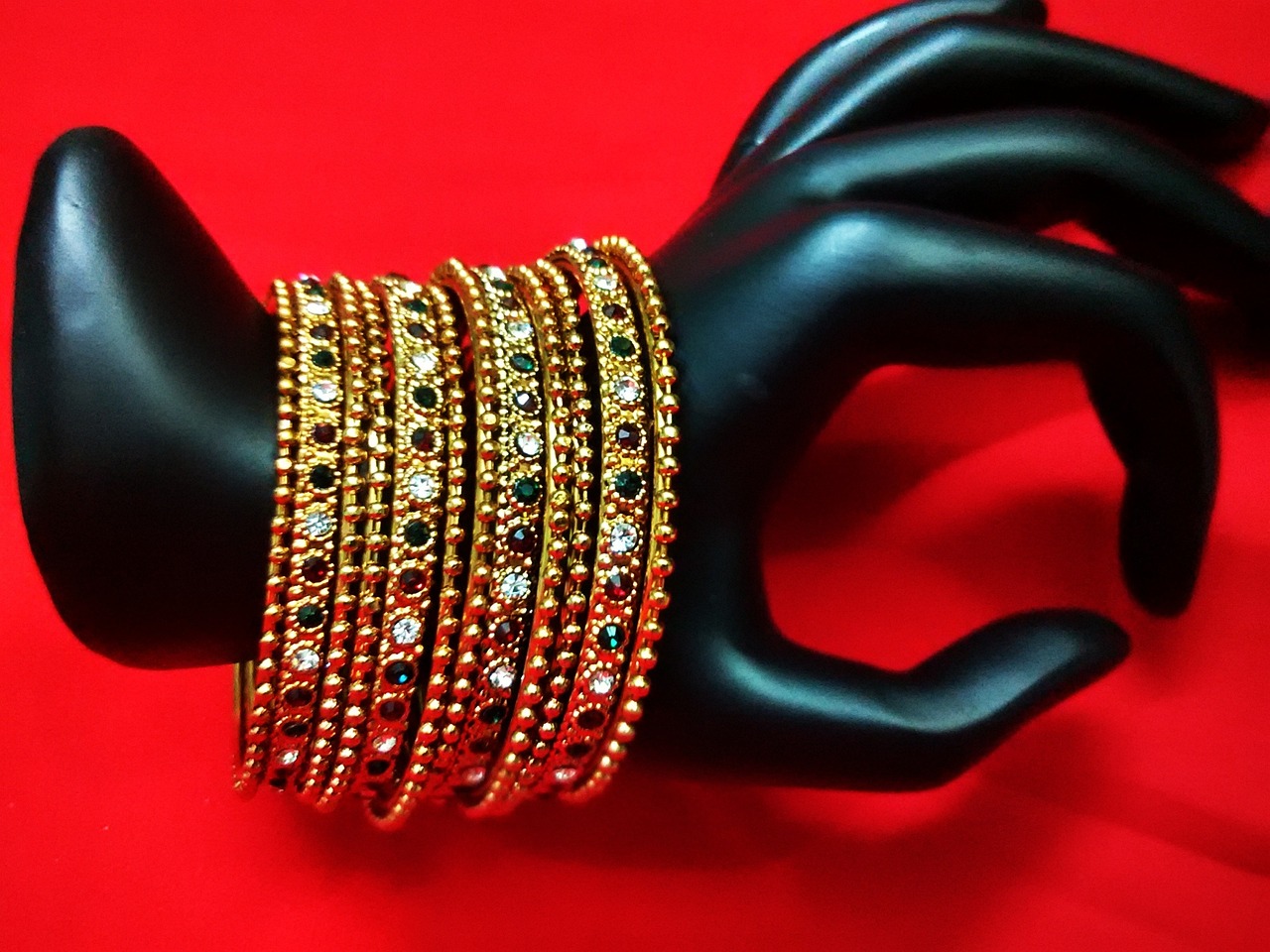
Jewelry as a Form of Expression
Jewelry serves as more than just an adornment; it is a profound form of personal expression that allows individuals to convey their unique identities, beliefs, and emotions. In various cultures and communities, jewelry has evolved into a significant medium through which people articulate their personal stories and values.
Throughout history, jewelry has been utilized to signify status, wealth, and cultural belonging. Today, it plays an essential role in how individuals express their personalities and beliefs. For many, jewelry is a canvas for creativity, where the choice of materials, designs, and symbols reflects their inner selves. This section will explore the multifaceted ways in which jewelry acts as a personal statement.
- Symbolism and Meaning: Many choose jewelry that holds specific meanings or symbols that resonate with their personal beliefs. For instance, a pendant with a heart may symbolize love, while a cross might represent faith.
- Custom and Personalized Jewelry: The trend of custom-made jewelry has surged, with individuals opting for pieces that tell their unique stories. Engraved names, birthstones, or significant dates are common choices that add a personal touch.
- Fashion and Trends: Social media platforms have made it easier for people to showcase their jewelry choices. Influencers and celebrities often set trends that allow individuals to express their style and personality through their accessories.
In conclusion, jewelry transcends its role as a mere accessory; it is a vibrant form of self-expression that reflects individual identity, beliefs, and creativity. Whether through meaningful symbols, personalized designs, or trend-driven choices, jewelry continues to be a powerful medium for personal storytelling.
Custom and Personalized Jewelry
has become a significant trend in the world of adornments, allowing individuals to express their unique identities and stories through bespoke creations. Unlike mass-produced jewelry, custom pieces are tailored to the wearer’s preferences, making them not just accessories but also cherished symbols of personal significance.
One of the main reasons for the rise in popularity of custom jewelry is the desire for uniqueness. People are increasingly looking for ways to stand out and showcase their individuality in a world where conformity often prevails. Custom jewelry provides an opportunity to create something that is entirely one-of-a-kind, reflecting personal experiences, milestones, or even aspirations.
Moreover, the process of designing custom jewelry can be deeply personal and fulfilling. Many artisans work closely with clients, allowing them to choose materials, styles, and engravings that resonate with their life stories. This collaborative approach not only results in a unique piece but also fosters a connection between the maker and the wearer, transforming the jewelry into a treasured keepsake.
In addition to personal significance, custom jewelry often carries emotional weight. For example, many people choose to commemorate special occasions, such as weddings, anniversaries, or the birth of a child, through personalized pieces. These items serve as constant reminders of cherished moments and can even be passed down through generations, becoming family heirlooms.
The trend of bespoke jewelry is also influenced by social media, where platforms like Instagram showcase innovative designs and inspire individuals to seek out personalized options. As consumers become more aware of their choices, they are increasingly opting for jewelry that aligns with their values and aesthetics.
In conclusion, the growing trend of custom and personalized jewelry reflects a broader shift towards individuality and meaningful expression in fashion. As more people seek to tell their stories through unique pieces, the world of jewelry continues to evolve, celebrating the beauty of personal narratives.
The Impact of Social Media on Jewelry Choices
Social media platforms have significantly reshaped the landscape of jewelry discovery and selection. With the rise of platforms such as Instagram and TikTok, users now have unprecedented access to a vast array of jewelry styles, trends, and brands. This section delves into how these social media platforms influence jewelry choices, particularly among younger demographics.
One of the most notable effects of social media on jewelry trends is the visual nature of these platforms. Instagram, with its focus on stunning visuals, allows brands and influencers to showcase their jewelry in captivating ways. High-quality images and videos can highlight the intricate details and craftsmanship of pieces, enticing potential buyers. Influencers often wear and promote jewelry in their posts, creating a sense of aspiration and desire among their followers.
Similarly, TikTok has emerged as a powerful tool for trendsetting. The platform’s short-form video format allows users to quickly share creative content, including jewelry styling tips, unboxing experiences, and DIY tutorials. Hashtags like #JewelryTok have gained popularity, making it easy for users to discover trending pieces and unique brands. This rapid dissemination of information fosters a culture of instant gratification, where users are eager to purchase items that they see trending online.
Moreover, social media facilitates direct interaction between consumers and brands. Customers can engage with jewelry designers through comments, direct messages, and live streams, allowing for personalized experiences. This interaction can build brand loyalty and encourage purchases, as consumers feel a connection to the creators behind the jewelry.
In conclusion, the impact of social media on jewelry choices is profound and multifaceted. Platforms like Instagram and TikTok not only showcase trends but also foster community engagement and brand loyalty. As social media continues to evolve, its influence on jewelry trends will likely grow, shaping the future of how consumers discover and select their adornments.

The Future of Jewelry in Global Cultures
As we navigate through an increasingly interconnected world, the future of jewelry is set to undergo significant transformations. The blending of traditional and modern influences is expected to shape upcoming trends, leading to a rich tapestry of cultural exchanges within the jewelry industry.
The rise of globalization has facilitated the flow of ideas, materials, and techniques across borders. This has resulted in a fusion of styles that reflect both heritage and contemporary aesthetics. For instance, traditional craftsmanship from various cultures is being reinterpreted through modern design principles. This not only preserves the essence of cultural significance but also makes it accessible to a broader audience.
- Cross-Cultural Collaborations: Designers are increasingly collaborating with artisans from different backgrounds, creating pieces that honor traditional methods while incorporating modern aesthetics.
- Technological Innovations: Advances in technology, such as 3D printing and sustainable materials, are allowing for unique designs that were previously unimaginable, merging functionality with artistry.
- Ethical Consumerism: As awareness of ethical practices grows, consumers are seeking jewelry that reflects their values, prompting brands to adopt sustainable sourcing and production methods.
Moreover, social media plays a pivotal role in shaping jewelry trends. Platforms like Instagram and TikTok enable rapid dissemination of styles and ideas, allowing for immediate cultural exchange. Influencers and celebrities often showcase unique pieces that resonate with diverse audiences, further blurring the lines between traditional and contemporary jewelry.
In conclusion, the future of jewelry in global cultures promises to be an exciting journey of innovation and tradition. As jewelry continues to evolve, it will undoubtedly reflect the dynamic nature of cultural identity, making it a fascinating area to watch in the coming years.
Frequently Asked Questions
- What is the historical significance of jewelry?
Jewelry has been part of human civilization for thousands of years, symbolizing wealth, power, and status. Its origins can be traced back to ancient civilizations, where it was often crafted from natural materials and used in various cultural rituals.
- How does jewelry express cultural identity?
In many cultures, jewelry serves as a marker of identity, representing ethnic backgrounds and cultural heritage. Different communities use specific styles, materials, and designs to express their uniqueness and traditions.
- What role does jewelry play in religious practices?
Jewelry often plays a crucial role in religious ceremonies, symbolizing faith and devotion. Many religions incorporate specific pieces into their rituals, enhancing the spiritual experience and connecting believers to their faith.
- How has modern jewelry evolved?
Contemporary jewelry design reflects changing societal values and aesthetics. Modern trends often reinterpret traditional designs, blending them with new materials and styles, influenced by factors such as celebrity culture and social media.
- What is ethical jewelry?
Ethical jewelry focuses on sustainability and fair trade practices. As consumers become more aware of environmental and social issues, there is a growing demand for jewelry that is responsibly sourced and produced.
- How can jewelry be a form of personal expression?
Jewelry is not just an accessory; it can convey personal beliefs and individuality. Many people choose custom or personalized pieces that tell their unique stories, making jewelry a powerful form of self-expression.

